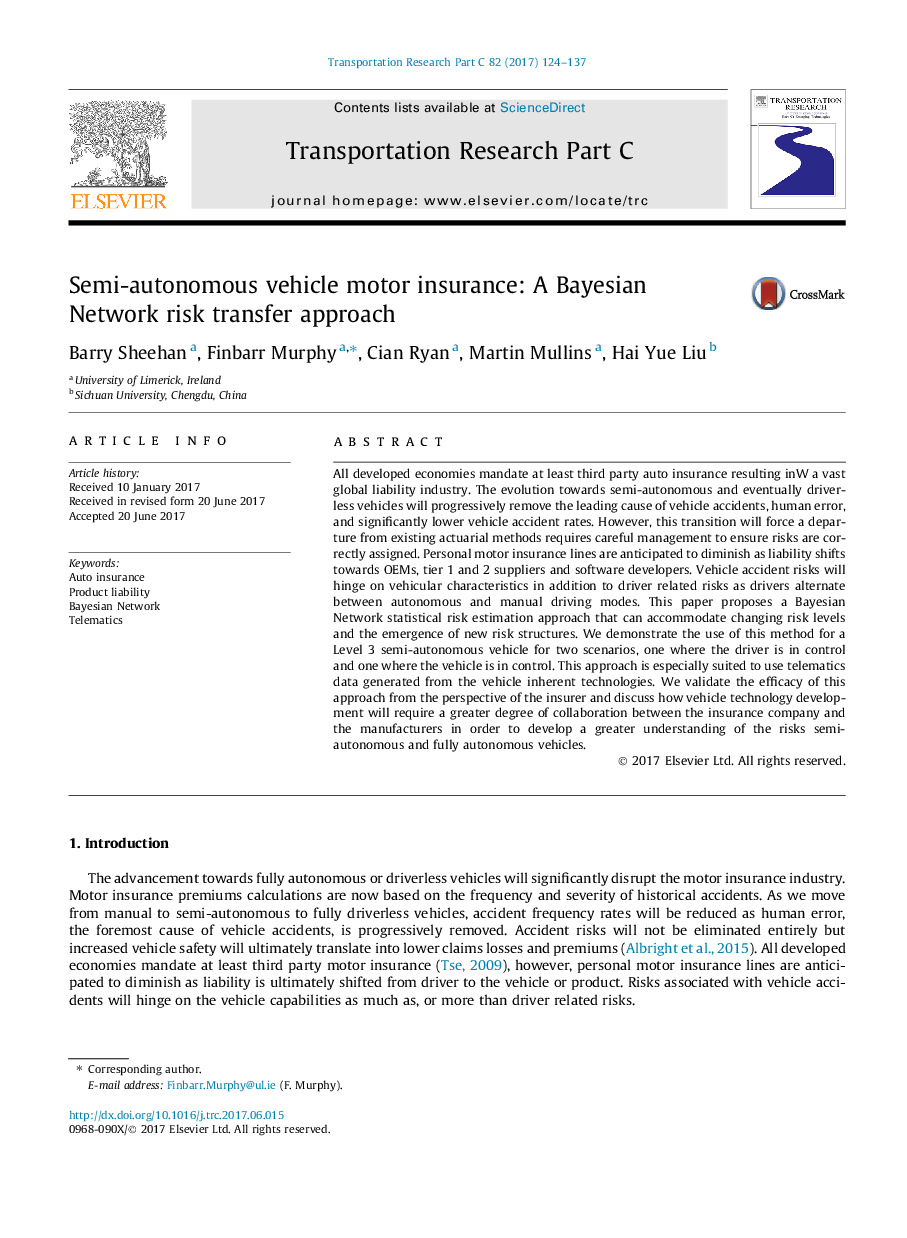| Article ID | Journal | Published Year | Pages | File Type |
|---|---|---|---|---|
| 4968485 | Transportation Research Part C: Emerging Technologies | 2017 | 14 Pages |
Abstract
All developed economies mandate at least third party auto insurance resulting inW a vast global liability industry. The evolution towards semi-autonomous and eventually driverless vehicles will progressively remove the leading cause of vehicle accidents, human error, and significantly lower vehicle accident rates. However, this transition will force a departure from existing actuarial methods requires careful management to ensure risks are correctly assigned. Personal motor insurance lines are anticipated to diminish as liability shifts towards OEMs, tier 1 and 2 suppliers and software developers. Vehicle accident risks will hinge on vehicular characteristics in addition to driver related risks as drivers alternate between autonomous and manual driving modes. This paper proposes a Bayesian Network statistical risk estimation approach that can accommodate changing risk levels and the emergence of new risk structures. We demonstrate the use of this method for a Level 3 semi-autonomous vehicle for two scenarios, one where the driver is in control and one where the vehicle is in control. This approach is especially suited to use telematics data generated from the vehicle inherent technologies. We validate the efficacy of this approach from the perspective of the insurer and discuss how vehicle technology development will require a greater degree of collaboration between the insurance company and the manufacturers in order to develop a greater understanding of the risks semi-autonomous and fully autonomous vehicles.
Related Topics
Physical Sciences and Engineering
Computer Science
Computer Science Applications
Authors
Barry Sheehan, Finbarr Murphy, Cian Ryan, Martin Mullins, Hai Yue Liu,
